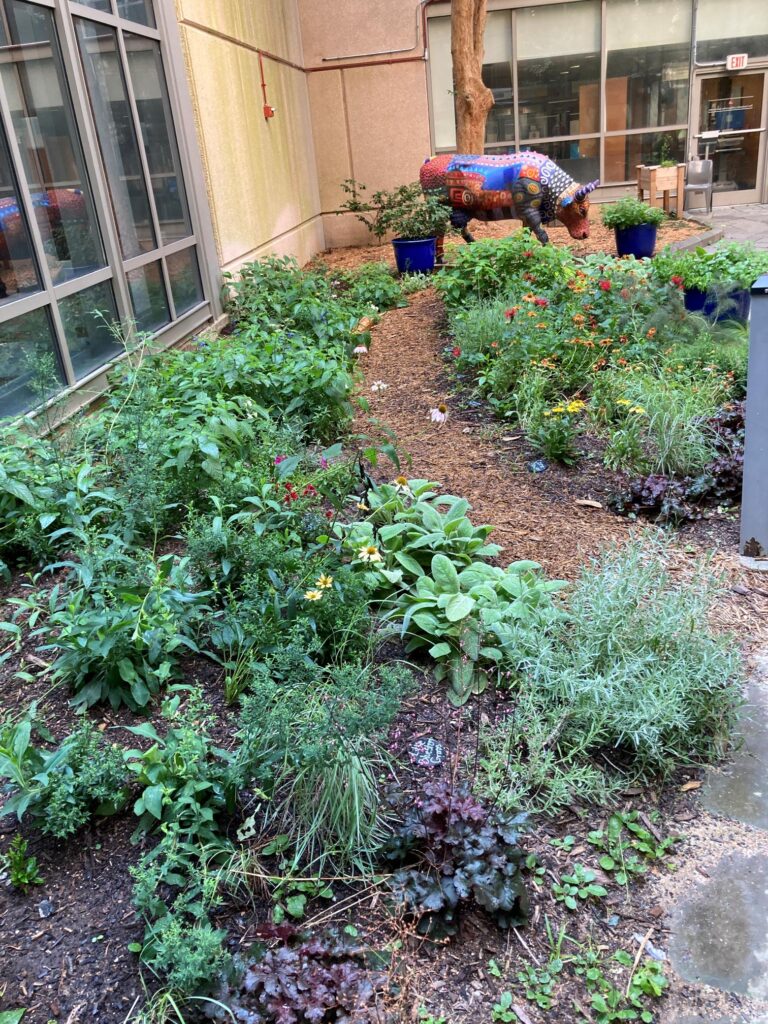By Katie Stoudemire
I’m the director of the tiny nonprofit program called Wonder Connection. We bring science and nature activities to kids and teens who are hospitalized at University of North Carolina hospitals in the children’s hospital and in the psychiatric unit. We’ve been bringing joy to the hospital for 17 years, and this year, we worked with patients on a plant-focused renovation of a garden in the psychiatric hospital.
We knew that the courtyard garden had lots of potential. But in 2022 it only had about 15 species of non-flowering plants.
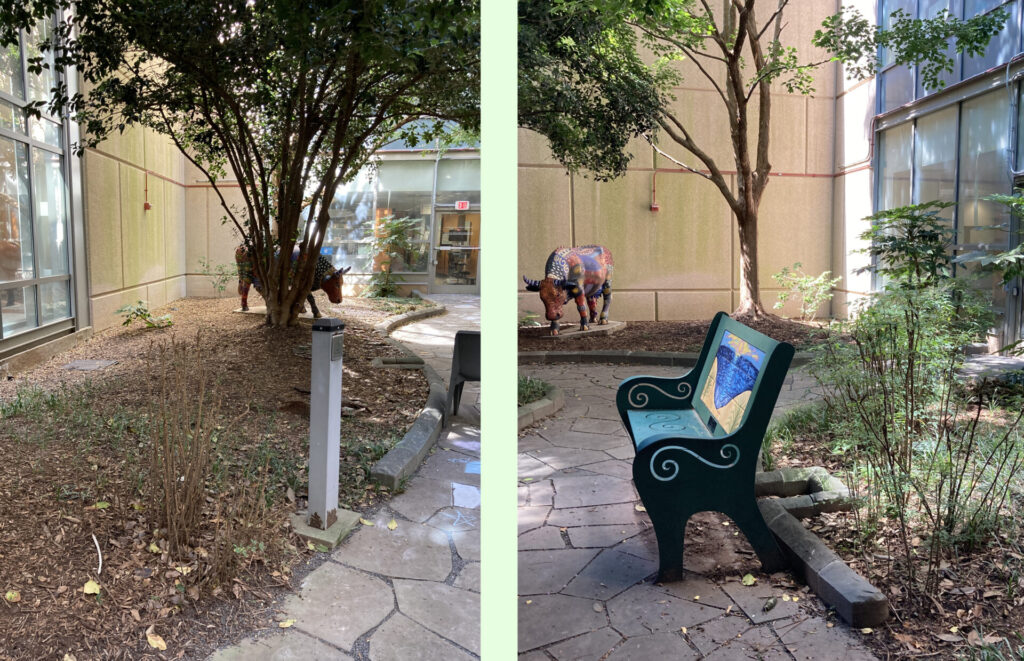
Our staff team visited several local native plant and pollinator gardens that inspired us, including Pollinator Paradise Garden in Pittsboro (special thanks to Debbie Roos for her tour), the Gold Park Pollinator Garden in Hillsborough, the NC Botanical Garden & Coker Arboretum, and Duke Gardens. We created mood boards with photos of plants and pollinators and garden elements.
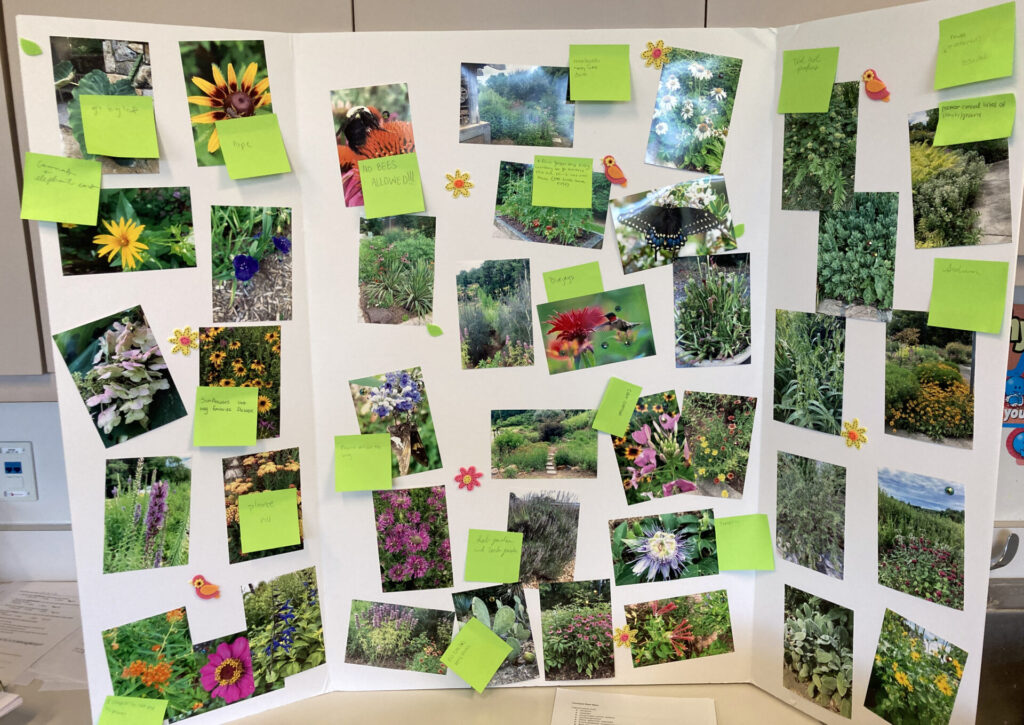
What we all want
Then we asked the child and adolescent psychiatric patients what they wanted to see and feel and be able to do in the garden space. We took notes on their input. I noticed they became more interested in talking and sharing when they realized I was writing down what they said. More students raised their hands to share their ideas. This was a reminder for me – that this is what we all want.
They wanted to be understood and seen as more than a medical diagnosis. We were happy to gather their input.
They said they wanted the space to feel “not like a hospital.” They said they wanted to feel joyful, peaceful, interested, and enchanted in the garden.
They requested:
• Looping paths to change your perspective.
• Lots of vibrant colors.
• And wanted the garden to be open and welcoming.
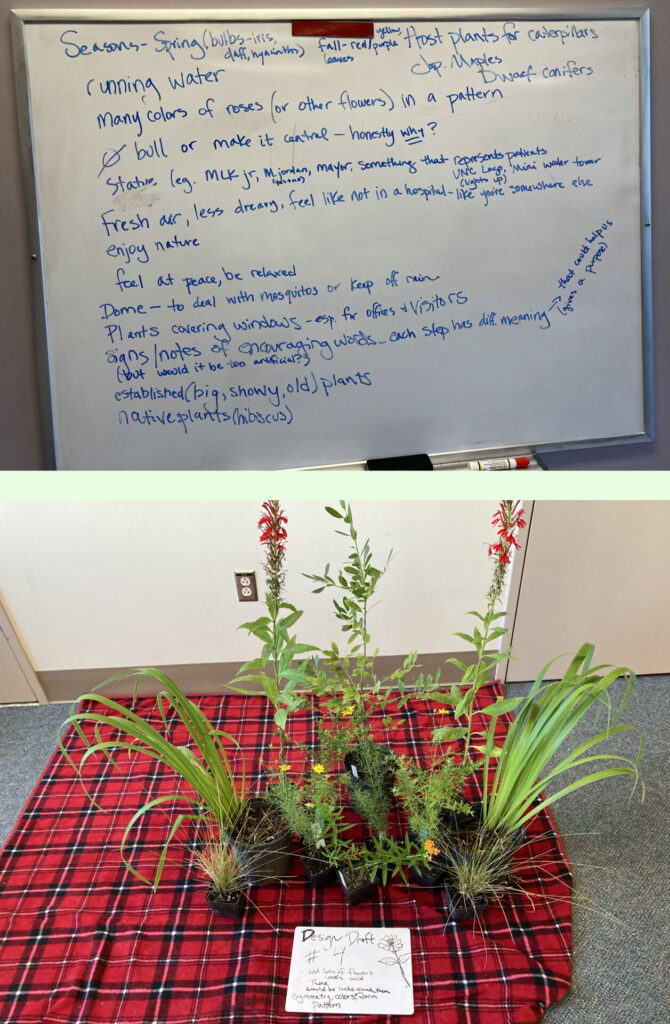
We collected all of their thoughts, as well as input from staff, and gave it to a brilliant and highly experienced landscape designer, Flo Chaffin. She took their input and created a beautiful and thoughtful plan full of plants that honored the patient’s wishes and thrived in the garden. We checked and double checked the plants for safety, making sure they were not sharp and also that all plant parts were non-toxic. We were delighted to find out that several native plants were safe to plant including Purple Coneflower (Echinacea purpurea), tickseed (Coreopsis sp.), beebalm (Monarda sp.), Blanketflower (Gaillardia aristata), Smooth Blue Aster (Symphyotrichum laeve), and Coral Bells (Heuchera sp.).
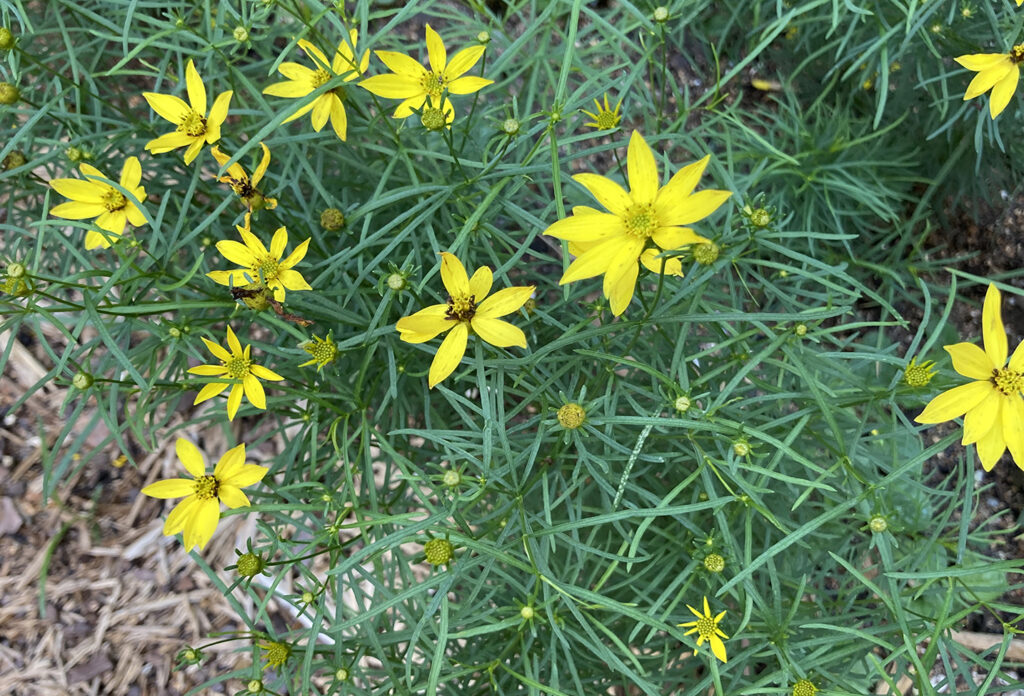
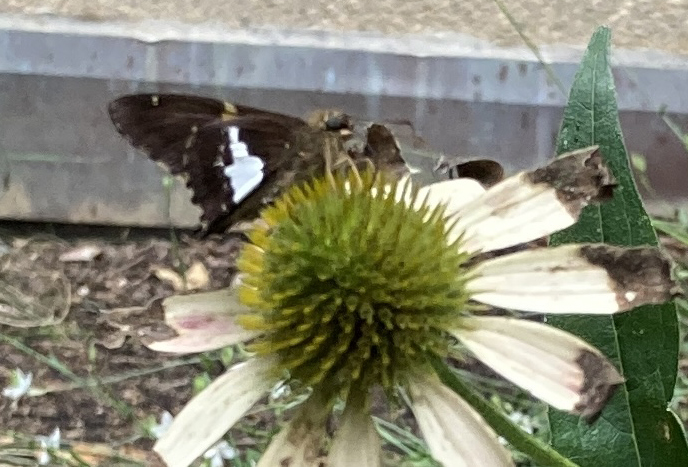
In April, we started planting with the patients. Many of them had never planted before. We gave them shoes to wear, the tools they needed, and a quick tutorial on how to plant. Then they got to work. Over the spring and early summer, patients planted almost all of the plants. They would eagerly show you which ones they tucked into the ground; some even named the plants they planted. One patient came back after several months and asked if she could walk over to visit the basil she had planted.
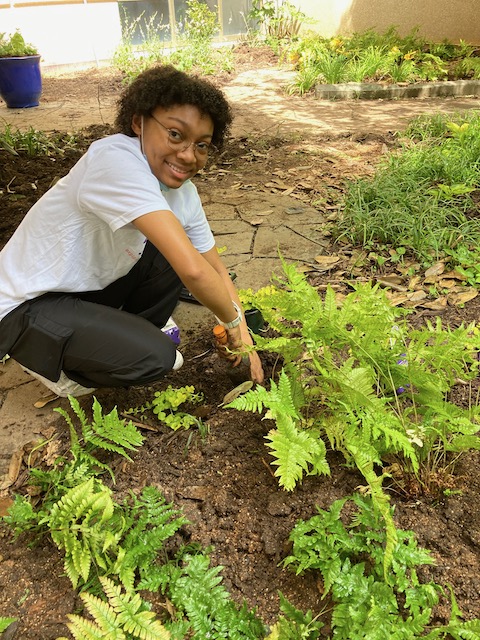
Many patients said that planting made them feel happy and calm. One said it even “kinda made me feel less worried.” One patient said that being in the garden made him feel “normal.” For this group of youth who are receiving psychiatric care, I cannot stress how important this is.
In the best possible way
One patient who had been really struggling and had declined to engage in any other activities really got into planting. She planted blanketflower and asters and heuchera and then used the hose to water them all in. She stayed engaged for over an hour. I asked her about her experience and she said it was fun digging in the dirt but also said, “It was therapeutic because before I came, I was all in my head thinking about what was making me sad, but when I was planting, I wasn’t in my head – I was just thinking about the plants.” Being outside with kids and teens makes me feel like I’m a camp counselor again, in the best possible way, and helps me get out of my own head.
As part of our work we strive to give patients choices. This garden now offers a myriad of different options for relaxation, enjoyment, observations, and activities. I think the patients and staff have enjoyed all of the parts of this project and will continue to enjoy it. Our thriving garden is putting smiles on the faces of kids and teens in the psychiatric hospital. With Wonder Connection, we nurture their growing connection to nature.

P.S. In order to serve 500 patients and keep the garden thriving in 2024, we need support. Your tax-deductible donation will put smiles on the faces of kids and teens in the psychiatric hospital and nurture their growing connection to nature. www.wonderconnection.org/donate I’d be glad to share plant ideas, plans, and nontoxic plant information if any of you are interested in developing garden programs to help people connect with nature. (katie@wonderconnection.org).
By Katie Stoudemire
Native Plant News – Winter 2023
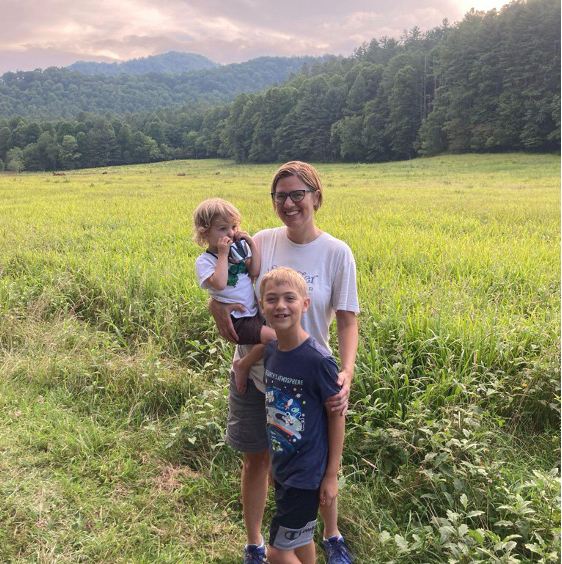
Katie Stoudemire especially enjoys learning from kids and teenagers, making a mess, and brainstorming new activities. She founded Wonder Connection in 2006. When she’s not at work, she loves being outside with her family. (katie@wonderconnection.org)
